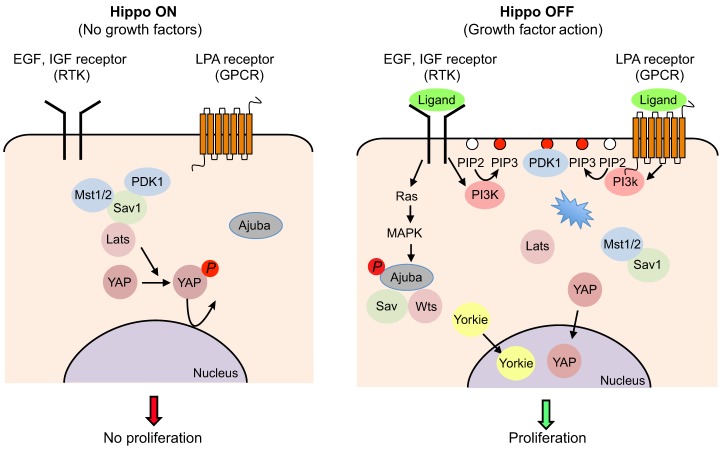Fig. 4.
Two mechanisms for growth-factor-mediated regulation of the Hippo pathway: activation of Ras-MAPK signaling and activation of PI3K-PDK1 signaling. (Left panel, Hippo pathway on) In confluent cells in the absence of growth factors, PDK1 forms a complex with Hippo pathway components (Lats, Mst and Sav1) and the Hippo pathway is active. Mst phosphorylates Mob and Lats, which then phosphorylate YAP. YAP is then excluded from the nucleus and cell growth is arrested. (Right panel, Hippo pathway off) Activation of the Ras-MAPK pathway by EGF signaling phosphorylates Ajuba, which binds to and inhibits the activity of the Sav�–Wts complex, leading to dephosphorylation of Yorkie, its accumulation in the nucleus and increased cell proliferation. Growth factors (EGF, LPA or serum) can also activate PI3K and recruit PDK1 to the membrane, resulting in the dissociation of the PDK1–Hippo complex. As a result, the regulation of Lats by Mst is prevented, which eventually leads to nuclear accumulation of YAP and cell proliferation. Figure was modified with permission (Fan et al., 2013). PIP2, PtdIns(4,5)P2; PIP3, PtdIns(3,4,5)P3.

